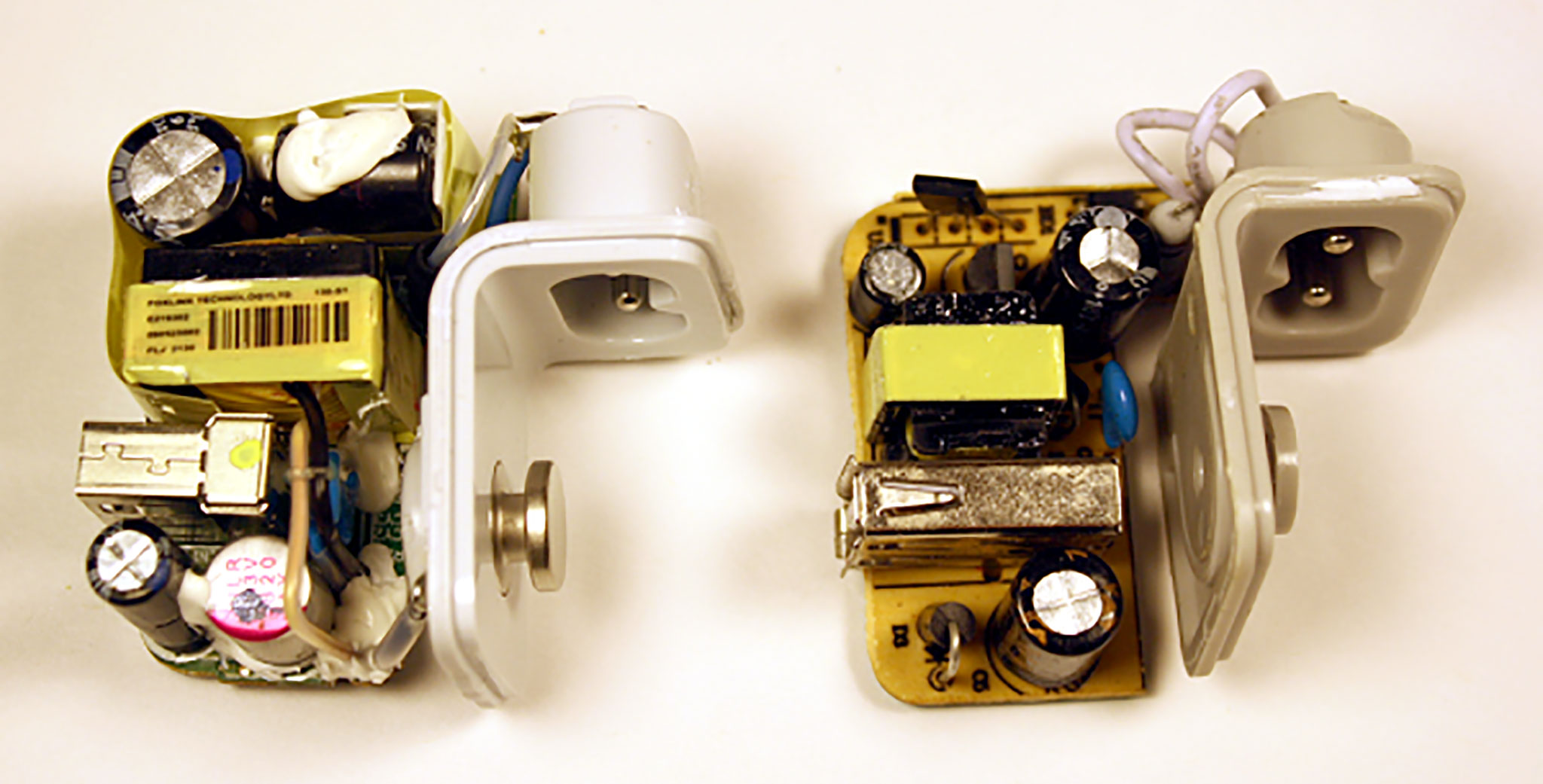The difference between an Apple-made iPad charger and a cheap knock-off

The difference between an Apple-made iPad charger and a cheap knock-off may seem obvious — price. One is almost $20 and the other just $3. What's not so obvious is what's inside the chargers that make for that difference in price. Part of it is Apple's profit margins, no doubt, which included research and development into making the original charger. But it also includes far more and far safer components, and far, far more care. Both the genuine Apple charger and the cheap knock off were taken apart and analyzed by Ken Shirriff:
Safety probably isn't something you think about when you plug in your charger, but it's important. Inside the charger is 170 volts or more with very little separating it from your iPad and you. If something goes wrong, the charger can burn up (below), injure you, or even killyou. Devices such as chargers have strict safety standards - if you get a charger from a reputable manufacturer. If you buy a cheap counterfeit charger, these safety standards are ignored. You can't see the safety risks from the outside, but by taking the chargers apart, I can show you the dangers of the counterfeit.
There's always a difference between cost and value. For some the most valuable thing is cheapness. For others it's time or quality or safety and we'll gladly pay more to get better. In some cases it may not be worth it, in other it may be absolutely priceless. It's an assessment we each of us have to make every time we choose to buy something that has cheap, average, and premium priced versions.
Personally, if electricity is involved, I may look at lower priced (or ever higher-priced, more specialized) alternatives from known and respected accessory companies, but I'm sure as hell not going to get the next-to-nothing priced knockoff.
Shirriff's tear down and analysis is incredible detailed. Check it out and then let me know — does it change the way you look at $3 chargers on eBay?
Source: Ken Shirriff via Daring Fireball
iMore offers spot-on advice and guidance from our team of experts, with decades of Apple device experience to lean on. Learn more with iMore!

Rene Ritchie is one of the most respected Apple analysts in the business, reaching a combined audience of over 40 million readers a month. His YouTube channel, Vector, has over 90 thousand subscribers and 14 million views and his podcasts, including Debug, have been downloaded over 20 million times. He also regularly co-hosts MacBreak Weekly for the TWiT network and co-hosted CES Live! and Talk Mobile. Based in Montreal, Rene is a former director of product marketing, web developer, and graphic designer. He's authored several books and appeared on numerous television and radio segments to discuss Apple and the technology industry. When not working, he likes to cook, grapple, and spend time with his friends and family.
